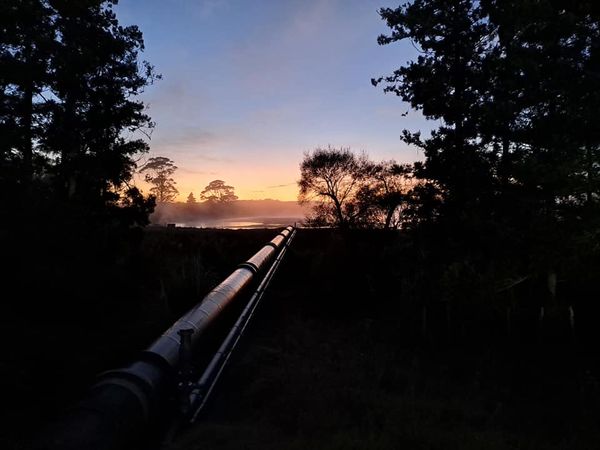A $128million upgrade to the Pukekohe wastewater treatment plant positions the area for further growth, Franklin Ward Auckland Councillor Andy Baker says.
He joined Watercare and mana whenua at a plant blessing recently and says the upgrade doubles its capacity and improves water quality at the Parker Lane Stream.
“It’s great to see this important project completed. We’re expecting significant growth in Pukekohe over the next 30 years and the plant’s upgrade enables the community to grow and the local economy to flourish.”
Capacity at the plant, which treats Pukekohe, Buckland, Tuakau, Pokeno and Patumahoe wastewater, has been doubled to 60,000 households.
Representatives of Waikato Tainui and Te Taniwha oo Waikato – a group representing nine lower Waikato marae – marked the upgrade with a dawn blessing.
Watercare chair Margaret Devlin says the company has worked closely with mana whenua, conversations about renewing the plant’s discharge consent beginning in 2014.

“We explored cultural, social and environmental concerns while considering data, engineering processes and cost. We’ve developed a new appreciation for the relationship mana whenua have with the awa, and the impact population growth has had on it.
“We realised we needed to restore the awa and revised the design so discharge quality is so high it improves water at Parker Lane Stream where it discharges.”
Waikato Tainui executive chair Tukoroirangi Morgan says the upgrade is a significant step in addressing water quality in the Waikato. “Our position has always been the restoration of our taiao, especially our water sources. While we are celebrating, we would like more urgency applied to projects like this.”
The upgrade was delivered in two stages, the first starting in 2019 and involving the installation of new water inlet works, sludge and membrane reactors, a UV light disinfection system, and electrical and chemical system upgrades.
Stage two involved moving to the latest reactors, which lower the discharge nitrogen level.
Watercare wastewater operations controller Iris Tscharntke says the reactors combine spaghetti-like membranes that filter wastewater with biological treatment processes. “We have an army of good bugs eating carbon to reduce organic compounds and nitrogen.”


